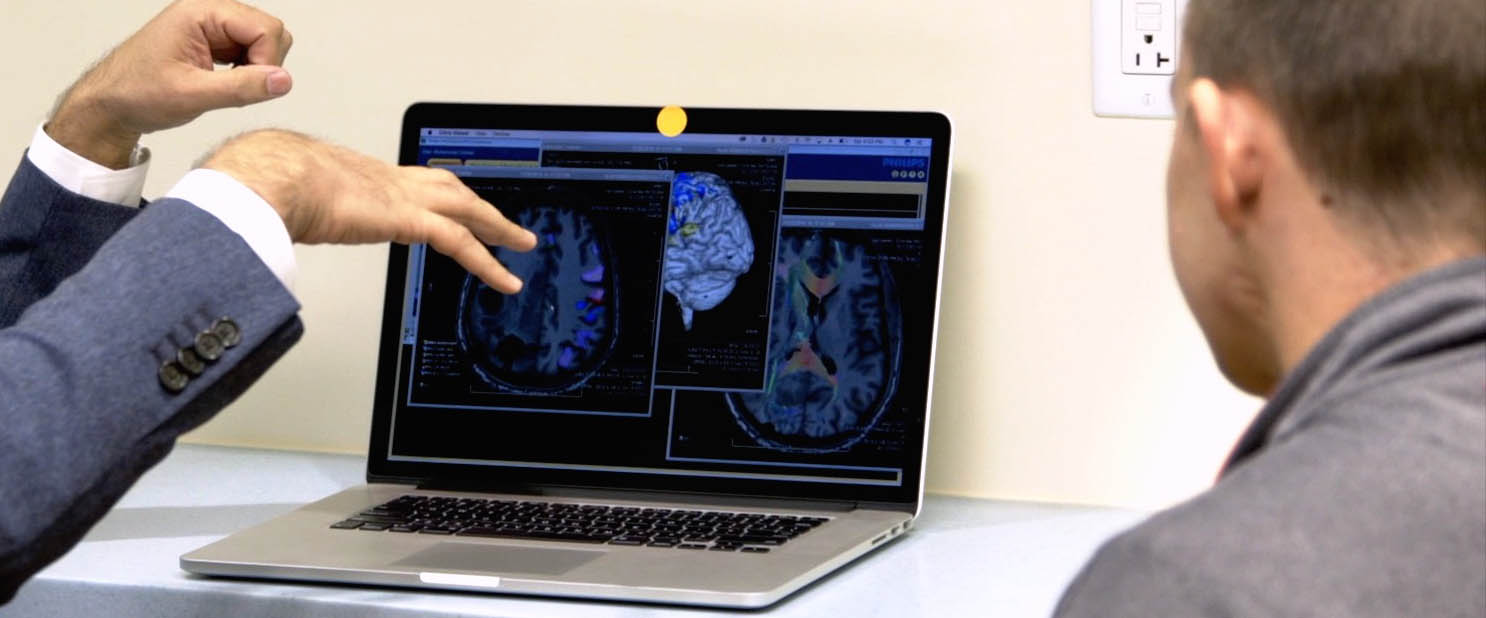University of New Mexico neurologist Rawan Tarawneh, MD, has identified a unique biomarker that could lead to new diagnostic tests to improve the detection of incipient Alzheimer’s disease before symptoms appear.
In a paper published in the Annals of Clinical and Translational Neurology in November 2022, Tarawneh and her colleagues identified a new protein in the cerebrospinal fluid that can reliably detect endothelial injury – damage to the cells lining the tiny blood vessels in the brain – in Alzheimer’s disease. Using this biomarker, Tarawneh’s team found that endothelial injury is an important contributor to cognitive impairment in even the earliest pre-symptomatic stages of the disease.
The findings offer a glimmer of hope to more than six million Americans who are living with Alzheimer’s, including more than 43,000 New Mexicans aged 65 and older, as they could spur further research for drug interventions to potentially prevent damage to the brain endothelium.
“All of this is new,” said Tarawneh, associate professor in the UNM Department of Neurology, who serves as director of the UNM Cognitive Neurology Section and director of the Memory & Aging Clinic. “These are novel and exciting findings.”
All of this is new. Our findings on the value of VE-Cadherin as a marker of endothelial injury in Alzheimer’s disease patients are novel and exciting
In studying 700 cognitively normal participants who had biomarker evidence of Alzheimer’s disease, Tarawneh was joined by investigators from UNM and the Knight Alzheimer’s Disease Research Center (ADRC) at Washington University in St. Louis, including Genomics Core director Carlos Cruchaga, PhD. The study participants, who were enrolled at the Knight Washington ADRC, had all undergone detailed clinical, cognitive, MRI and PET scans and biomarker assessments that included measuring a novel marker of endothelial injury called vascular-endothelial cadherin (VEC).
The research team discovered that, compared to controls, their cerebrospinal fluid levels of VEC were elevated in even the stages of Alzheimer’s, before the onset of memory loss. When combined with established Alzheimer’s biomarkers, like amyloid and tau, cerebrospinal fluid levels of VEC improved the ability of these markers to detect early Alzheimer’s pathology.
“Our study suggests that endothelial damage plays an important role very early in the course of Alzheimer’s disease, and is directly linked to memory, cognitive functions and synaptic plasticity,” Tarawneh said.
Additionally, researchers found that VEC levels correlated with cognitive outcomes to a similar extent as amyloid and tau in these early preclinical stages, even when adjusting for imaging measures of small vessel disease.
“We found that we could measure endothelial injury reliably in the brain of Alzheimer’s disease patients and that endothelial injury actually correlates with cognitive outcomes, to a similar degree as amyloid and tau. We have also identified several pathways by which the endothelium influences memory and learning independently of amyloid and tau,” she said. “So, this is proving that, yes, endothelium – the lining of the blood vessels – has a direct correlation with cognitive impairment.”
For years, researchers focused on observed changes in brain tissue under a microscope that include the beta-amyloid protein and another protein, called tau.
Beta-amyloid is a naturally occurring protein that, in Alzheimer’s patients, clumps together in abnormal levels to form plaques that collect between neurons and disrupt cell function. Tau is a protein that collects inside neurons. In Alzheimer’s disease, tau detaches from the microtubules that serve as structural supports for neurons and sticks to other tau molecules, forming dense tangles.
Researchers are still trying to determine which of these changes might cause Alzheimer’s and which might be a result of the disease.
For a long time, endothelial damage was considered secondary to amyloid and tau toxicity. However, recent studies have begun to shed light on the importance of the endothelium and other vascular constituents in triggering the cascade of events that lead to Alzheimer’s disease.
The research suggests that not only do toxic levels of amyloid and abnormal accumulations of tau cause endothelial injury, but that the opposite is also true: an increase in amyloid and tau levels could be due to endothelial injury.
“Now we’re seeing that maybe endothelial damage could be the inciting event,” Tarawneh said, “and then amyloid and tau are secondary to that.”
Tarawneh hypothesizes that some form of microcirculatory failure happens that starts in the capillaries, where endothelial cells are damaged.
“Once endothelium is damaged, it causes aggregation of amyloid and tau. And then amyloid and tau cause further endothelial damage because they’re toxic,” she said. “It’s a vicious cycle.”
In the early 2000s, Tarawneh’s grandmother was diagnosed with Alzheimer’s disease. Tarawneh was disheartened by a lack of research in the field and was thus propelled into pursuing a neurology career and learning what happens to the brain in Alzheimer’s disease.
“Even now, we have very few options that we can offer our patients,” she said. “It’s a dreadful experience to go through personally when you see someone you love who is not able to recognize you. It’s a heartbreaking situation.”
Looking forward, Tarawneh said she wants to do more research to understand how the endothelium is involved in Alzheimer’s disease. This work could spur further research for drug intervention in preventing and/or healing endothelial injury, she said.
“Maybe targeting it would be a way to treat the disease,” Tarawneh said. “It’s a new avenue for drug discovery.”
In 2020, the National Institutes of Health issued a three-year $3.1 million grant to UNM to establish an exploratory ADRC.
Tarawneh plans to further pursue this research through the UNM ADRC and funding she has received from UNM President Garnett S. Stokes’s Grand Challenges Initiative.
“My goal is to recruit more and more participants at UNM and get cerebrospinal fluid and blood samples from them so we can validate these results and also expand on our previous work,” she said.
